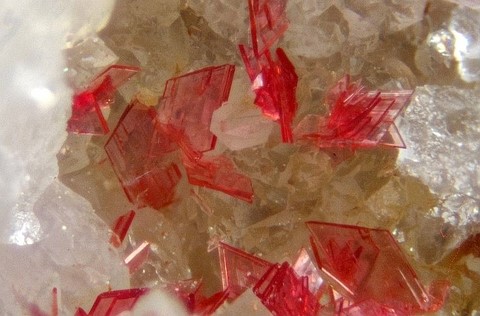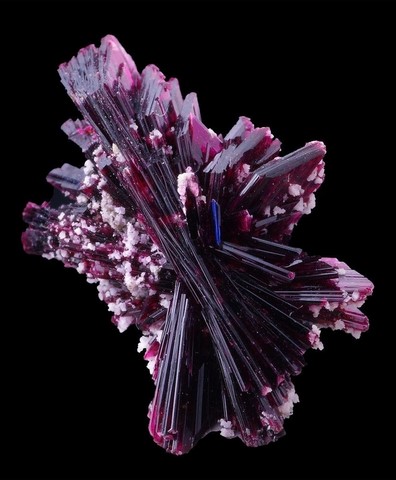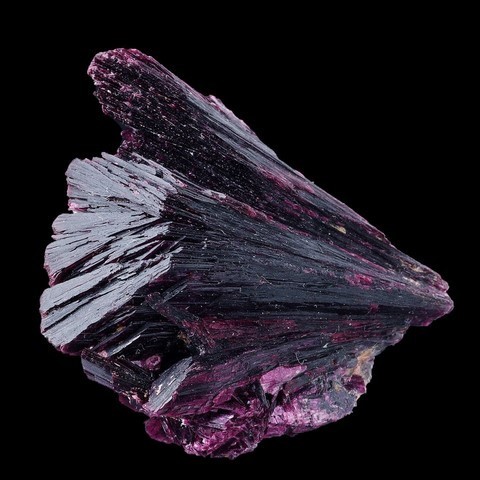ERYTHRITE
Class : Phosphates, arsenates, vanadates
Subclass : Hydrated arsenates
Crystal system : Monoclinic
Chemistry : Co3(AsO4)2 . 8H2O
Rarity : Rare
Erythrite (sometimes referred like erythrine) is a rare secondary mineral of the oxidation zones of cobalt-nickel sulphide deposits (skutterutide, cobaltite, etc...), but it is nevertheless the most common of the cobalt arsenates. It has the same crystalline structure as annabergite (nickeliferous) with which it constitutes a continuous series. Erythrite owes its name to the Greek eruthros (red), in reference to its color. It occurs in very aesthetic flat acicular crystals, flattened according to the perfect cleavage {010}, striated vertically, frequently grouped in rosettes or sheaves. The clear shapes, however, are relatively rare and the mineral is mostly known in radiated fibers, or encrustations with a fibrous to earthy structure. Its color, a beautiful purplish pink among large crystals, fades into carmine pink in small ones and then pale pink in incrustations. It is a rare mineral sought after by collectors that has no special use and whose low hardness (1 to 2 on the Mohs scale) prohibits any use in ornament or jewelery.
Erythrite in the World
Erythrite in France

Erythrite is known in France in rare millimetric crystals at the Treille Mine near Ste-Marie-aux-Mines (Haut-Rhin) and at the Chalanches mine in Isère the type-locality where it occurs in encrustations. It is also found at the St-Daniel mine near Giromagny, Territoire-de-Belfort (photo on the right © Thierry Brunsperger - Mindat) and Beyrède-Jumet (Hautes-Pyrénées) in millimetric rosettes.
Twinning and special crystallizations
Fakes and scams
No fakes reported for this mineral species.
Hardness : 1.5 to 2.5
Density : 3.06 to 3.18
Fracture : Sectible
Trace : Pink
TP : Translucent to transparent
IR : 1.626 to 1.701
Birefringence : 0.071
Optical character : Biaxe +
Pleochroism : Strong
Fluorescence : Sometimes orange
Solubility : Acids
Magnetism : None
Radioactivity : None


